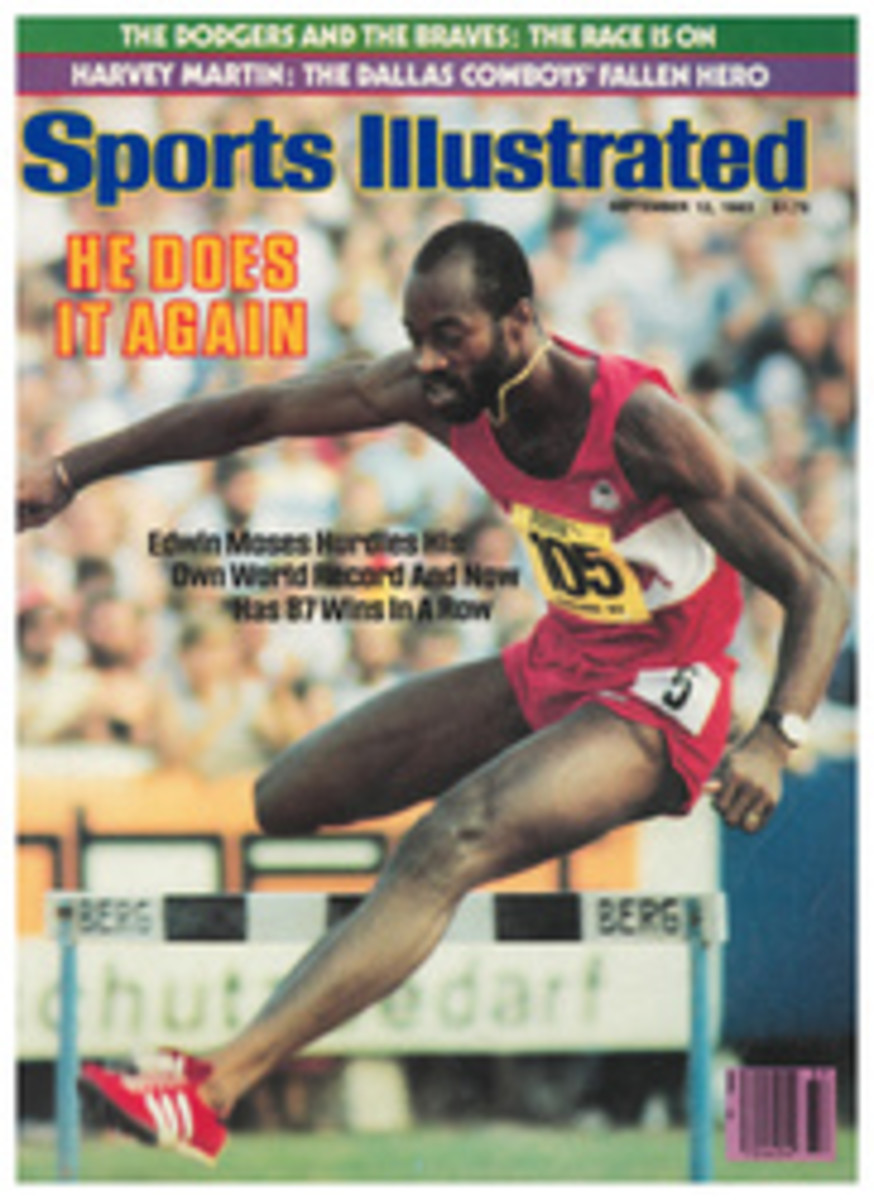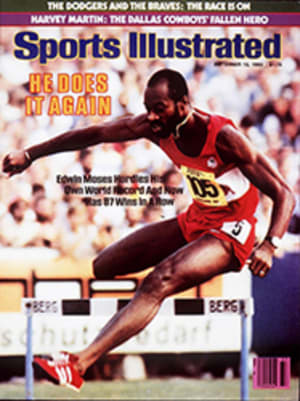
Liberty Is Free To Face A Fierce Foe
At 6:45 last Friday evening, Lady Marta, a small powerboat carrying the New York Yacht Club's selection committee, motored slowly through the crowded harbor of Newport and drew alongside the U.S. 12-meter Liberty. That afternoon Liberty had twice defeated another U.S. boat, Courageous, by :52 and a close :13, for an August trials record of 14-8. The N.Y.Y.C.'s Robert McCullough, 63, boarded first, followed by the rest of the nine-member committee, all dressed in bright red pants and jaunty straw hats. McCullough shook the hand of Liberty's skipper, Dennis Conner, and told him that Liberty had been selected to defend the America's Cup.
And the party was on. Horns blew, cannons boomed, champagne corks popped, and The Stars and Stripes Forever blasted tinnily from a loudspeaker aboard another boat. Bodies still holding bottles of champagne hurtled through the gloaming, hit the water and came up laughing. With a half-consumed bottle of champagne clutched in his fist, John Marshall, the mainsail trimmer on Liberty, described the last race of the trials to choose the America's Cup defender for 1983. The lead changed hands seven times over the 18-mile course, which was buffeted by a 19-knot breeze.
"We were pretty far behind at the first mark," Marshall said. "We gained a little on the run, but on the second beat, we tacked our way through them. That was one of the most fantastic beats of the summer and maybe in my experience in America's Cup racing. The boat that can come from behind and work its way through the leader, I mean, that's impressive. It's a hell of a hard thing to do."
Courageous began the Cup campaign as a glorified sparring partner for Defender, her syndicate's newer boat. But when Defender turned out to be disappointingly slow in all but the lightest air, Courageous, whose favorite weather is 18 knots and up, emerged as a contender. With Defender at the light end of the wind scale and Courageous at the other, Liberty was, to her benefit, caught in the middle. She was pushed hard from both ends all summer and therefore was forced to broaden her area of performance. "Liberty's not an outstanding boat in any particular condition," says Marshall, "but she's a very broadly excellent boat. In September in Newport you have to be able to win in any condition, and if you have to pick a little edge, you've got to be good in a breeze. Finishing the series against Courageous in good strong breezes left no doubts, I think. If the last race had been won in a drifting match, or a fluky race, well, that would be one thing. But we raced in real honest America's Cup conditions, and it was tough, tough racing. It was super."
In the Cup finals on Sept. 13, Conner and Liberty will no doubt be up against Australia II, which may or may not be a super boat. Liberty will have everything else that money and hard work can buy, but she won't have wings on her keel, and therein may lie her fate. Therein, too, lies the cause of what has been, so far, one of the most contentious America's Cup summers in memory.
In July a feud between the ever-combustible Alan Bond, the head of the Australia II syndicate, and his personal nemesis, the N.Y.Y.C., broke into open warfare over the issue of Australia II's winged keel. It all started when the club requested through official channels a reconsideration of the measurement of Australia II. Unfortunately, Australia II had already run up a 27-3 record, which led most people to assume that if she had been 3-27, no problem would have arisen. The Australians, in turn, revealed that the Liberty syndicate had tried to buy information about the keel from the tank-testing facility in the Netherlands, where Australia II's designer, Ben Lexcen, had worked for four months in 1981. The Australians next disclosed that a member of the N.Y.Y.C.'s selection committee, Richard Latham, had approached the head of the tank-testing facility, Peter van Oossanen, allegedly in an effort to get him to sign a document that said in effect that van Oossanen and his staff, not Lexcen, had been primarily responsible for the design of the keel. (If her designer hadn't been an Australian national, Australia II could have been disqualified from Cup competition.) Van Oossanen refused.
Oddly enough, it was Peter de Savary, the head of the British syndicate, who calmed the troubled waters by producing a confidential ruling from the International Yacht Racing Union, the governing body of the sport. The I.Y.R.U. decision, dated Aug. 17, 1982, said if de Savary wanted to put "winglets" on his Victory '83, he could—and still be legal under the 12-meter rule. When queried by the N.Y.Y.C, the I.Y.R.U. said the same standard applied to Australia II.
End of keel flap, except for a press release from the club dated Aug. 26, which began: "The New York Yacht Club is pleased to announce that questions relating to the keels of Australia II and Victory '83 and the design thereof have been resolved." Or, as Emily Litella of the original Saturday Night Live show would say, "Never mind."
Meanwhile, out on the ocean, Victory '83 and Australia II were racing in the challenger finals. Victory '83 won the first race of the best-of-seven series fair, square and surprisingly. But the 13-second loss was apparently the jolt the Aussies needed after a summer of almost uninterrupted triumph, and Australia II came back to win the next three by wide margins—and needed only one more to dismiss Victory '83.
Liberty vs. Australia II: Two good boats, or one good boat and one super boat? Stay tuned.
PHOTO
With Conner at the wheel, Liberty sailed to a 34-17 record over her three U.S. rivals.
PHOTO
Conner took to a smaller craft for the soggy celebration of his victory in Newport Harbor.

